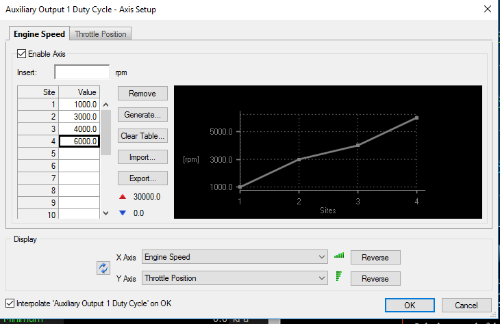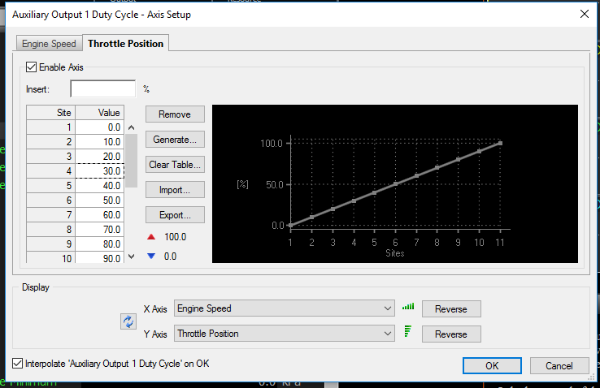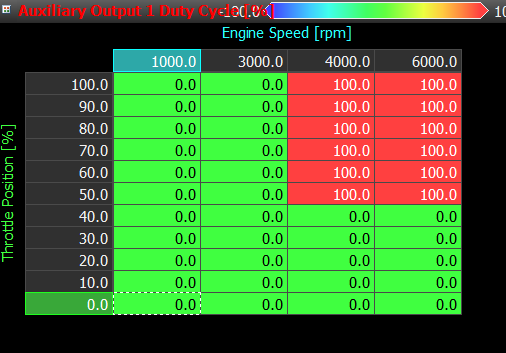M1 Sequential Turbos
Hi
Car: Toyota Supra Twin Turbo running Sequentially, OEM Ecu the transition to the second Turbo is around 3500-3800rpm
Question:
How is the M130 setup?
My map has IACV and EGCV set to two Aux outputs , my understanding is the transition is regulated by the Manifold pressure? 350kPa , constantly turbo one is working , when Manifold Absolute pressure hits 350kPa , turbo two comes online? can you calculate this into RPM?
Maybe I am looking in the wrong area but I cannot find anything in the M1 Tune to indicate EGCV opens at a certain RPM? But was told it is around 3800 it happens , my Dyno Graph looks too linear power delivery to suggest the ECU is running the tubbies sequentially
How the OEM System works
Actuators and VSVs:
They are not pulse width modulated save for the wastegate one. So the other 3 are either open or closed. The wastegate one is PWM controlled.
There are four VSV/actuator assemblies that control the sequential turbo operation:
[*]Intake Air Control Valve (IACV)
[*]Exhaust Gas Control Valve (EGCV)
[*]Exhaust Gas Bypass Valve (EGBV)
[*]Wastegate
VSVs switch manifold pressure (boost) to and away from actuators. The actuators open/shut valve butterfly flaps.
IACV
When this switches, boost generated by #2 turbo is allowed to join the intake stream
When it isn't switched, there is a small flap in the IACV assembly that allows any boost generated by #2 turbo as it prespools to join the intake stream, preventing turbo stall.
EGCV
This allows exhaust gas to flow through #2 turbo, causing it to spin up. When it's shut, there is no gas flow through the impeller of #2 turbo and therefore it doesn't spin.
EGBV
This allows some exhaust gas to bypass the EGCV and join the output of the first turbo. It serves two purposes - one, it prespools the second turbo by allowing some exhaust gas flow through it. Two, it controls the amount of exhaust gas going through the first turbo in much the same way as a wastegate - therefore controlling the maximum boost pressure generated by #1 turbo.
Wastegate
This bypasses exhaust gas from the first turbo, lowering the overall amount of exhaust gas going through *both* turbos and controlling the maximum boost pressure generated by both turbos in parallel.
ECU Setup
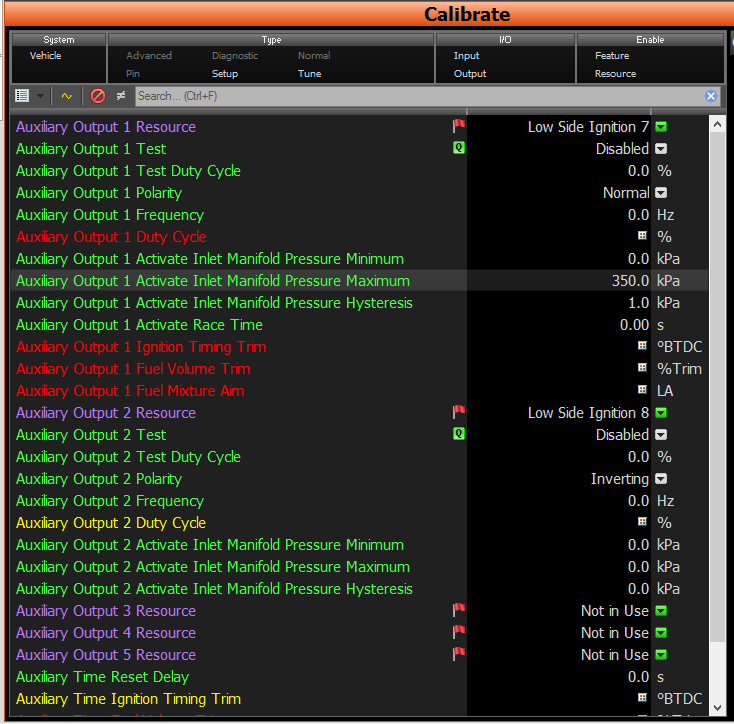
DYNO's
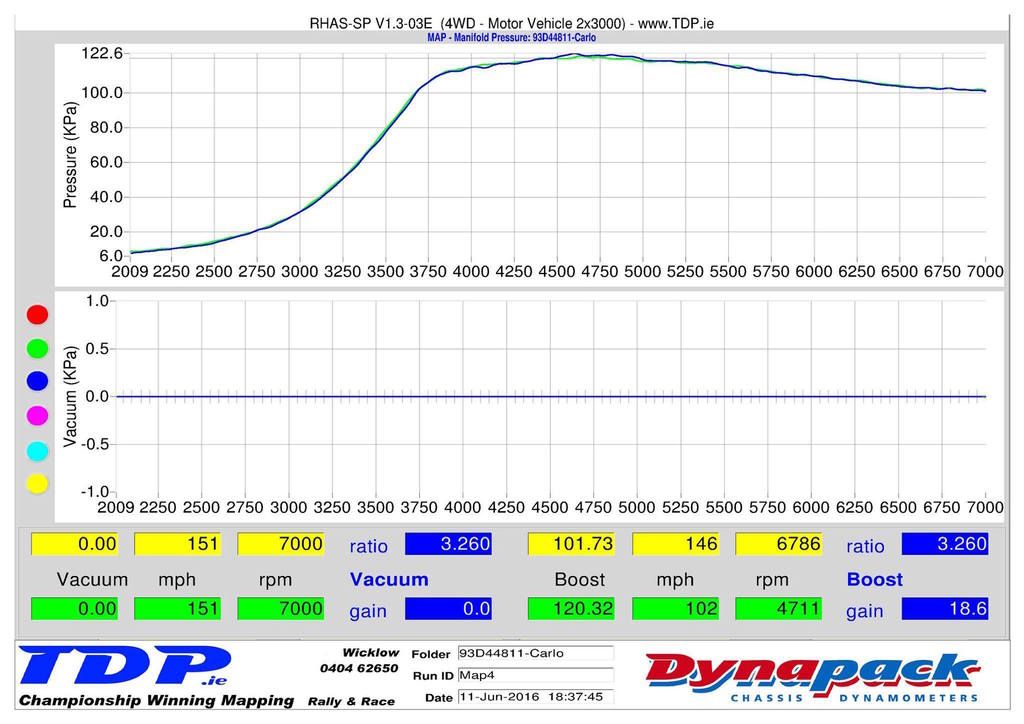
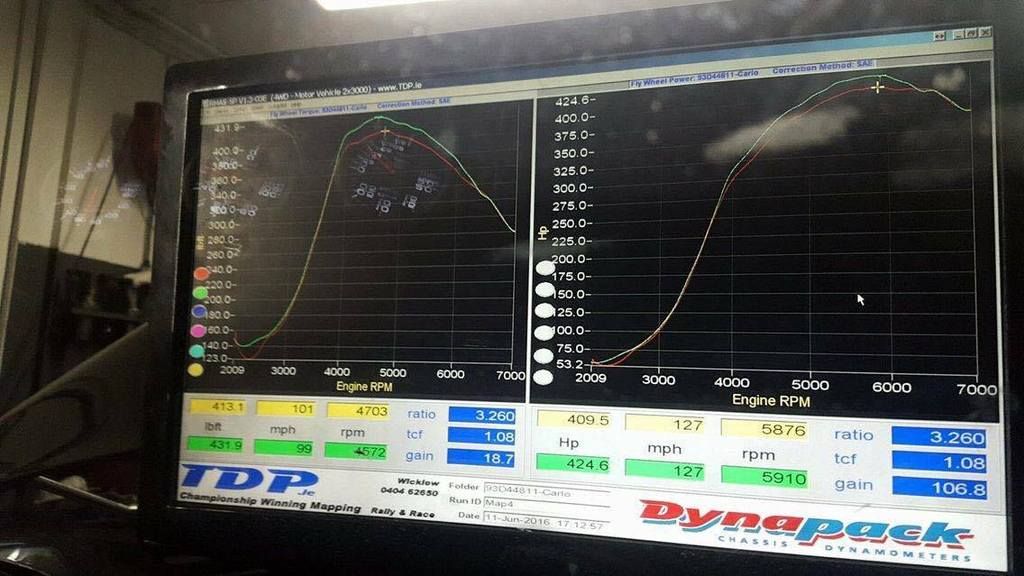
Car: Toyota Supra Twin Turbo running Sequentially, OEM Ecu the transition to the second Turbo is around 3500-3800rpm
Question:
How is the M130 setup?
My map has IACV and EGCV set to two Aux outputs , my understanding is the transition is regulated by the Manifold pressure? 350kPa , constantly turbo one is working , when Manifold Absolute pressure hits 350kPa , turbo two comes online? can you calculate this into RPM?
Maybe I am looking in the wrong area but I cannot find anything in the M1 Tune to indicate EGCV opens at a certain RPM? But was told it is around 3800 it happens , my Dyno Graph looks too linear power delivery to suggest the ECU is running the tubbies sequentially
How the OEM System works
Actuators and VSVs:
They are not pulse width modulated save for the wastegate one. So the other 3 are either open or closed. The wastegate one is PWM controlled.
There are four VSV/actuator assemblies that control the sequential turbo operation:
[*]Intake Air Control Valve (IACV)
[*]Exhaust Gas Control Valve (EGCV)
[*]Exhaust Gas Bypass Valve (EGBV)
[*]Wastegate
VSVs switch manifold pressure (boost) to and away from actuators. The actuators open/shut valve butterfly flaps.
IACV
When this switches, boost generated by #2 turbo is allowed to join the intake stream
When it isn't switched, there is a small flap in the IACV assembly that allows any boost generated by #2 turbo as it prespools to join the intake stream, preventing turbo stall.
EGCV
This allows exhaust gas to flow through #2 turbo, causing it to spin up. When it's shut, there is no gas flow through the impeller of #2 turbo and therefore it doesn't spin.
EGBV
This allows some exhaust gas to bypass the EGCV and join the output of the first turbo. It serves two purposes - one, it prespools the second turbo by allowing some exhaust gas flow through it. Two, it controls the amount of exhaust gas going through the first turbo in much the same way as a wastegate - therefore controlling the maximum boost pressure generated by #1 turbo.
Wastegate
This bypasses exhaust gas from the first turbo, lowering the overall amount of exhaust gas going through *both* turbos and controlling the maximum boost pressure generated by both turbos in parallel.
ECU Setup

DYNO's


